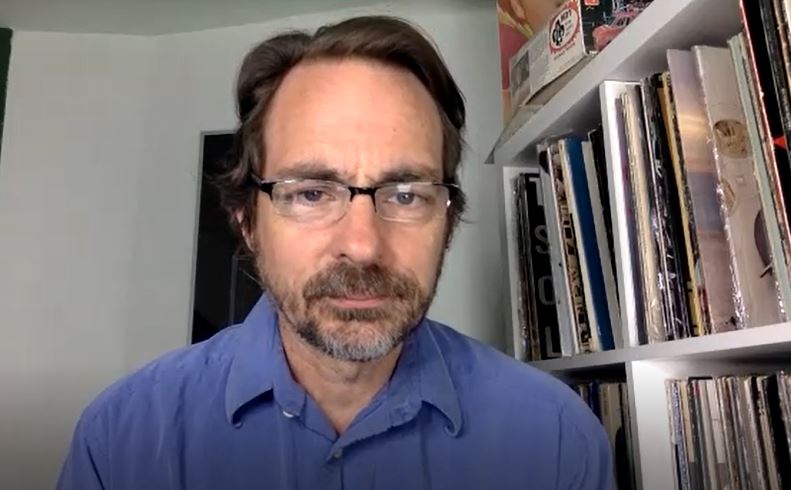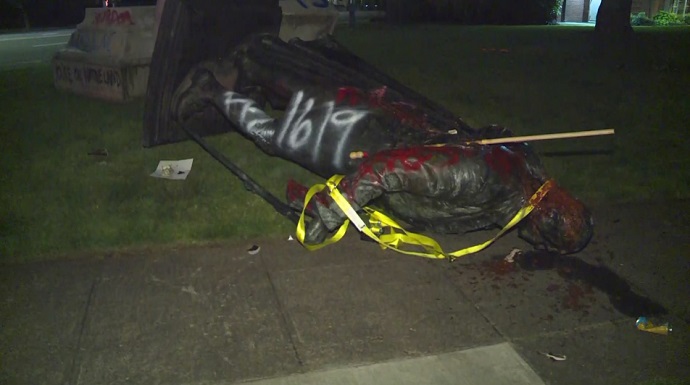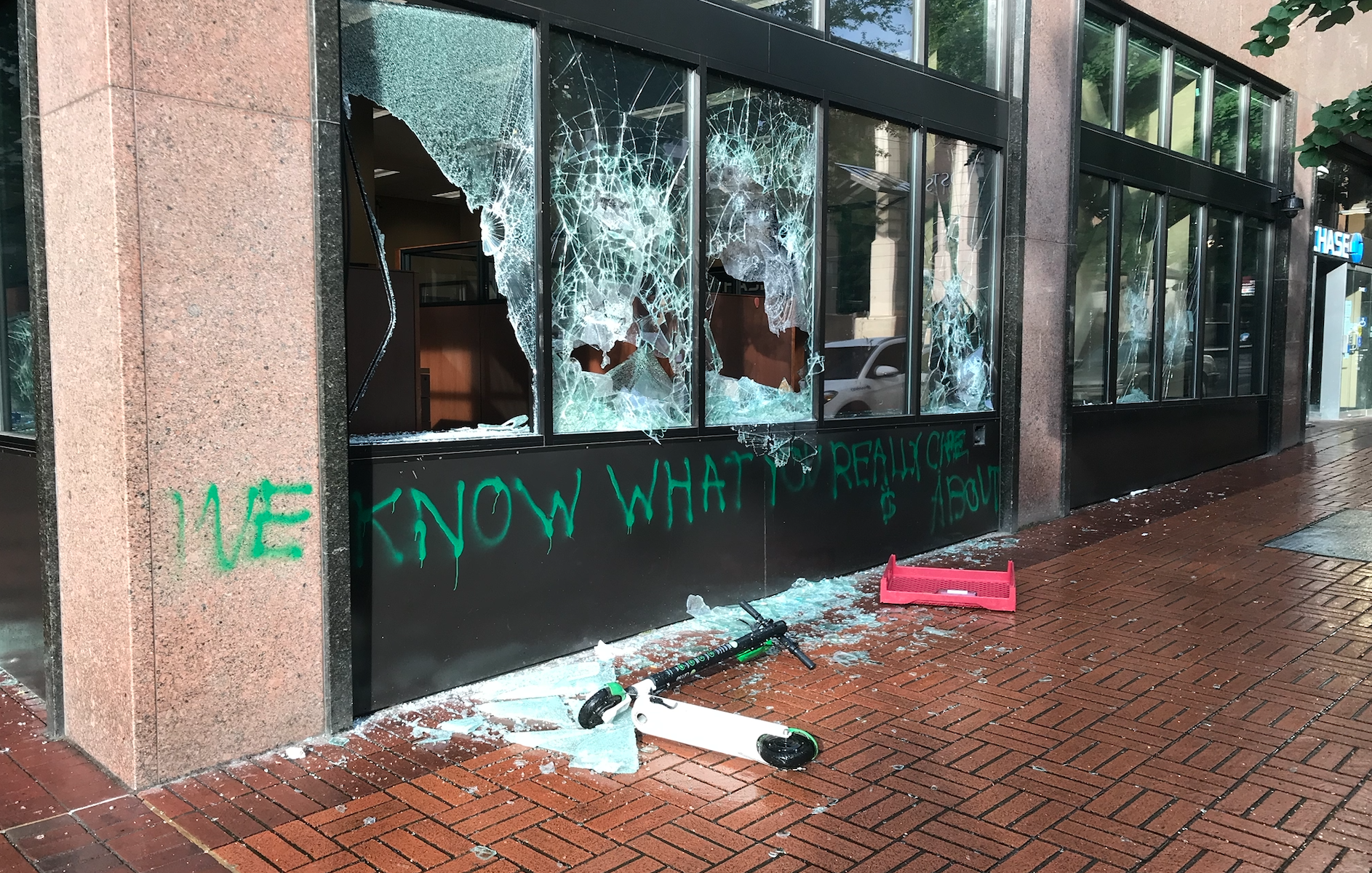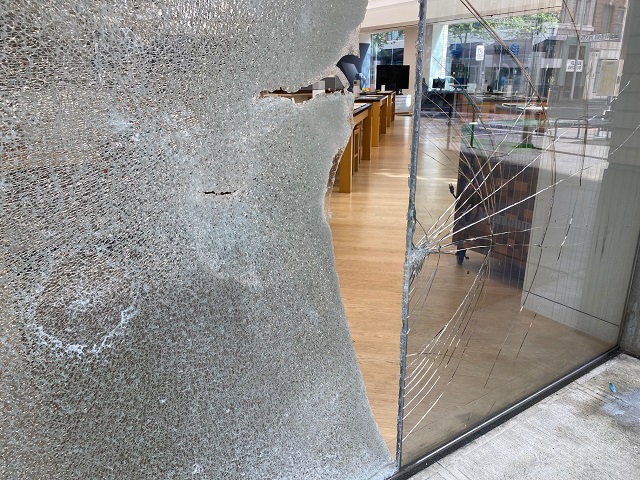PORTLAND, Ore. (KOIN) — One week ago, Rose City Justice leaders urged protesters to keep their eye on the prize even as Multnomah County entered Phase 1 of coronavirus reopening, providing plenty of distractions from the movement to end “systemic oppression” and police brutality.
The group’s daily marches at one point attracted thousands of participants but had dwindled to turnout in the hundreds as demonstrations neared the one month mark in Portland. At the same time, the group drew harsh criticism from other protesters, most vehemently those who view the Justice Center as the main battleground. RCJ issued a statement apologizing for “silencing” some voices.
Organizers said via an Instagram post that they would need more time for a “re-structuring process,” and have not organized a march for several days.
But the pandemic that coincided with a nationwide protest sparked by the killing of George Floyd, a Black man who died in Minneapolis after an officer kneeled on his neck for nearly nine minutes during an arrest over an alleged counterfeit bill, created a “perfect storm” that has echoes of past civil rights efforts but is uniquely its own.
KOIN 6 News spoke with criminologist and anti-bias trainer Randy Blazak, PhD., about the effects of infighting and economic reopening on the protests, as well as what we could see as the summer progresses.
Conflict between groups of protesters
Blazak compares and contrasts the current protests to those of the 1960s. The Civil Rights movement had organized leadership that articulated the goal of the movement, as well as the tactics protesters should use, Blazak said.

“There’s always a lot of players. There are people that are agent provocateurs, there are people that are just there for a good fight,” he said. “But added to that is the decentralized nature of protests now that is sort of facilitated by social media more than a charismatic leader, a Martin Luther King if you will. And so there’s a lot of competing ideas about what the end game is and what the tactics should be and there are also people from the outside who aren’t really involved in the actual issues of the protest but are brought to the fray by the excitement, by the fact that it’s thrilling to be in the streets. Especially if you’re a young person raging against authority it’s kind of the place to be and so you kind of want the teargas canisters to go off because it adds to the us vs. them story that is what brought you to the fight in the first place.”
When it comes to protesters’ tactics, Blazak said there are some who believe violence is the other option, while others try to achieve long-term goals with a consistent presence in the streets. In some ways, the presence of less-than-peaceful protesters can amplify the voices of nonviolent activists, he said.
“There was a lot of mainstream people who weren’t very interested in Martin Luther King Jr. at all until they saw Malcolm X, until they saw the more radical option,” Blazak said. “All of a sudden those people took a second look at Martin Luther King and started to embrace his nonviolent tactic.”

Blowback to the movement
Blazak urges people to not just focus on the most dramatic images coming out of the protests. However, he acknowledges that “the pulling down of statues or the smashing of store windows or the spray painting profanities about the police” can damage the movement.
“It’s just so easy to get pulled into the most dramatic images when in fact the majority of these protests have been peaceful, have been attended by family members and children, and have not been hostile to the police in the way that the Justice Center events have,” he said.
Blazak went to observe one of the protests several weeks ago and said the exciting environment makes it easy to develop a tribal mindset.
“That works against the purpose of actually breaking the barriers down, including finding commonality with law enforcement and law enforcement who are reformers,” he said. “We’ve become very binary in this us vs them and I think the left is as good at doing this as the right.”
Impact of social media
Social media is sort of like electricity, Blazak said. “You can use it to light the room, or you can use it to electrocute someone to death.”
The Internet has undoubtedly helped marginalized people raise their voice. However, it also allows for the rapid spread of misinformation on both sides of the movement.
“You take the good with the bad, but there’s a lot of both when it comes to social media,” Blazak said.
COVID-19 and the ‘perfect storm’
There was a “perfect storm” between pandemic-related lock downs and the George Floyd killing that helped motivate people to join the protests.
Many were stuck at home and spending more time on the Internet, so a lot of people saw George Floyd’s killing who might not have seen it under normal circumstances, Blazak said.
“It was a wonderful, strange moment like we’ve never had before where people were both more plugged in to the external, but also had the opportunity to be more reflective because they weren’t at work and they weren’t hanging out in their normal settings.,” he said. “So I think a lot of that provided a platform for people to sort of hit the streets.”
The future of the movement
Like many, Blazak has “given up” on trying to predict the future in 2020. But he says the protests have had incredibly fast impacts, including the resignation of Portland’s police chief and reform legislation around the country.
The re-opening of the economy is already pulling people away from the movement, but Blazak said these protests “tend to have ebbs and flows.”
Right now we’re in a “bit of a down cycle, but it’s always possible for things to ramp up,” he said.
“I think the most obvious thing is as we move closer to the election, the rhetoric will be more intense,” he said, adding that there could be more incidents like George Floyd’s killing, as well as new lock downs that push people back to their laptops.
So Portland could be in for a turbulent summer.
“(The movement) certainly isn’t going away because it was always there,” Blazak said.



